Creating an impressive first impression starts at the curb. Your home's exterior sets the tone for everything that follows, influencing both guest perceptions and property values. Effective curb appeal combines strategic landscaping, thoughtful color choices, proper lighting, and architectural enhancements to create a cohesive, welcoming appearance. From bold front door transformations to sophisticated lighting schemes, each improvement should work harmoniously with your home's existing style while adding distinctive character. Smart curb appeal investments can increase property values by up to 28 percent while creating a space you'll love coming home to every day.
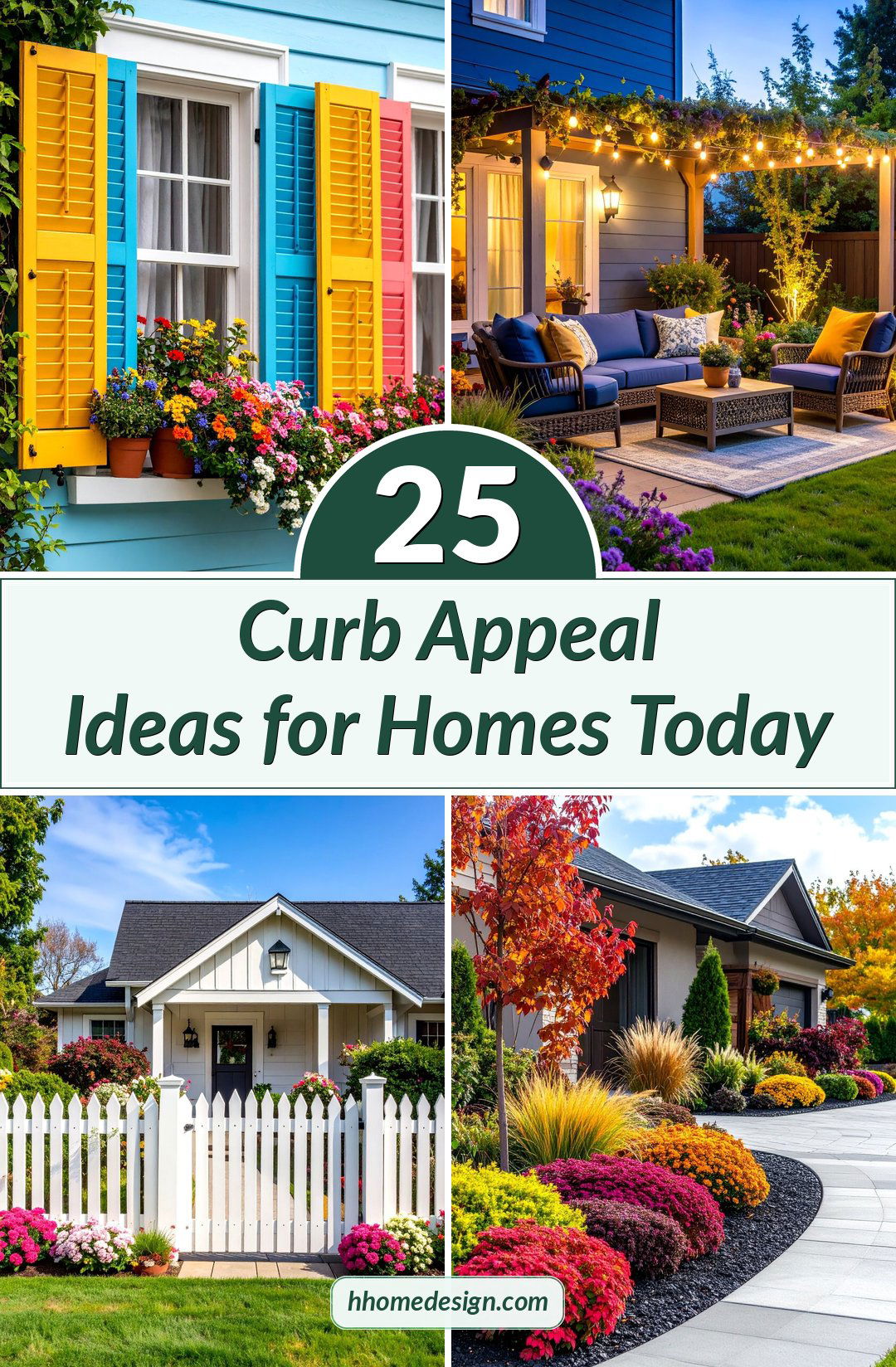
1. Bold Front Door Color Statement
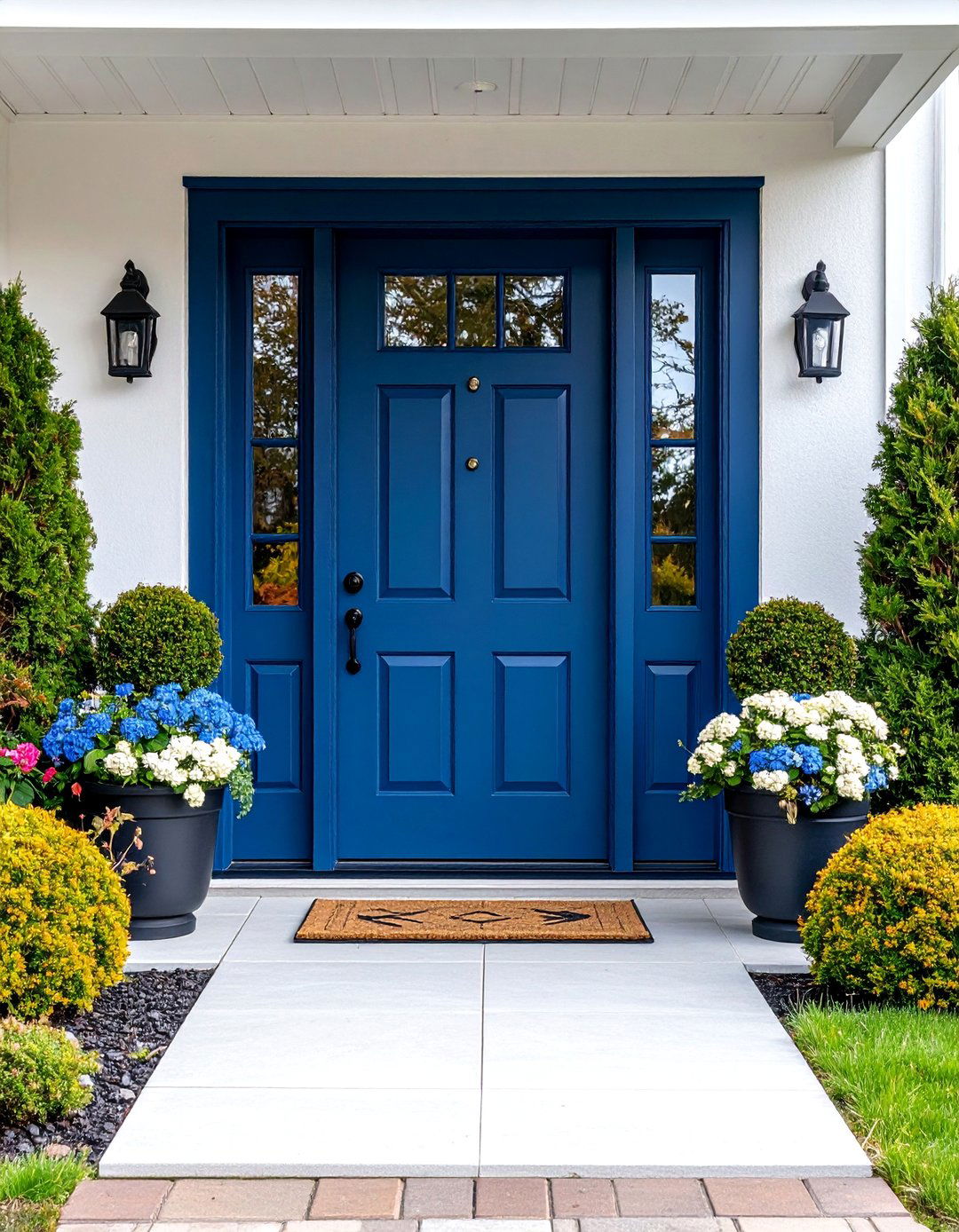
Transform your entrance with a striking front door color that commands attention and reflects your personality. Choose vibrant hues like deep navy, forest green, or classic red that contrast beautifully with your home's existing palette while maintaining architectural harmony. The right door color can increase your home's value by hundreds of dollars according to real estate studies. Coordinate with existing trim colors and consider your home's style when selecting shades. Pair your bold door with updated hardware in matching finishes, add a stylish doormat, and frame the entrance with symmetrical planters filled with seasonal blooms. This simple transformation creates an immediate wow factor.
2. Layered Foundation Landscaping Design
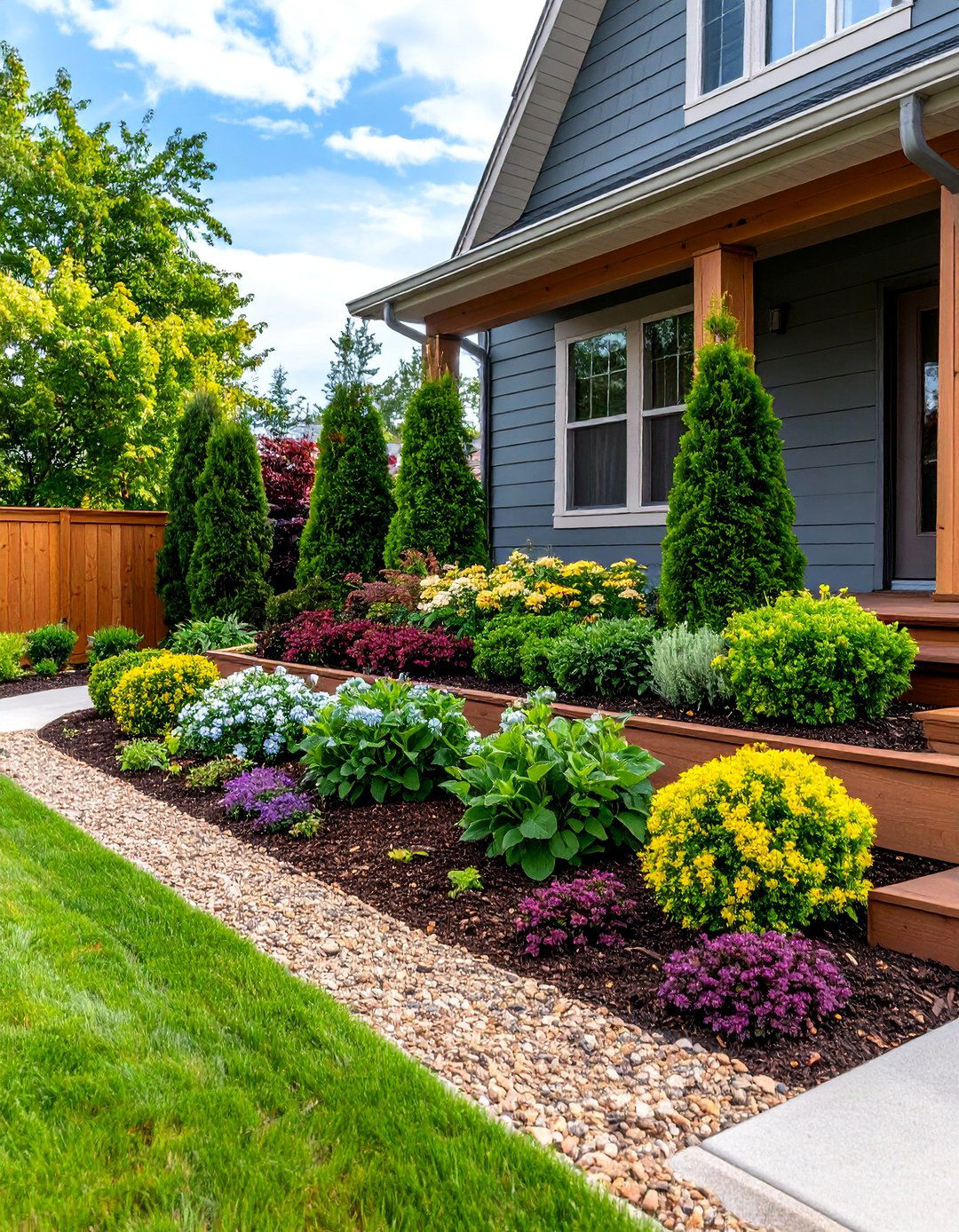
Create professional-looking foundation plantings using the classic three-tier approach with tall background shrubs, medium-height perennials, and low-growing ground cover plants. Choose evergreen backbone plants like boxwood or holly for year-round structure, then add seasonal color with flowering perennials and annuals. Vary textures and foliage colors to maintain visual interest throughout seasons. Position taller plants away from windows to avoid blocking natural light and architectural details. Include fragrant options like lavender or gardenias near walkways for sensory appeal. Proper spacing allows plants room to mature without overcrowding. This layered approach creates depth, sophistication, and ensures something beautiful is always blooming in your landscape beds.
3. Coordinated Exterior Color Palette
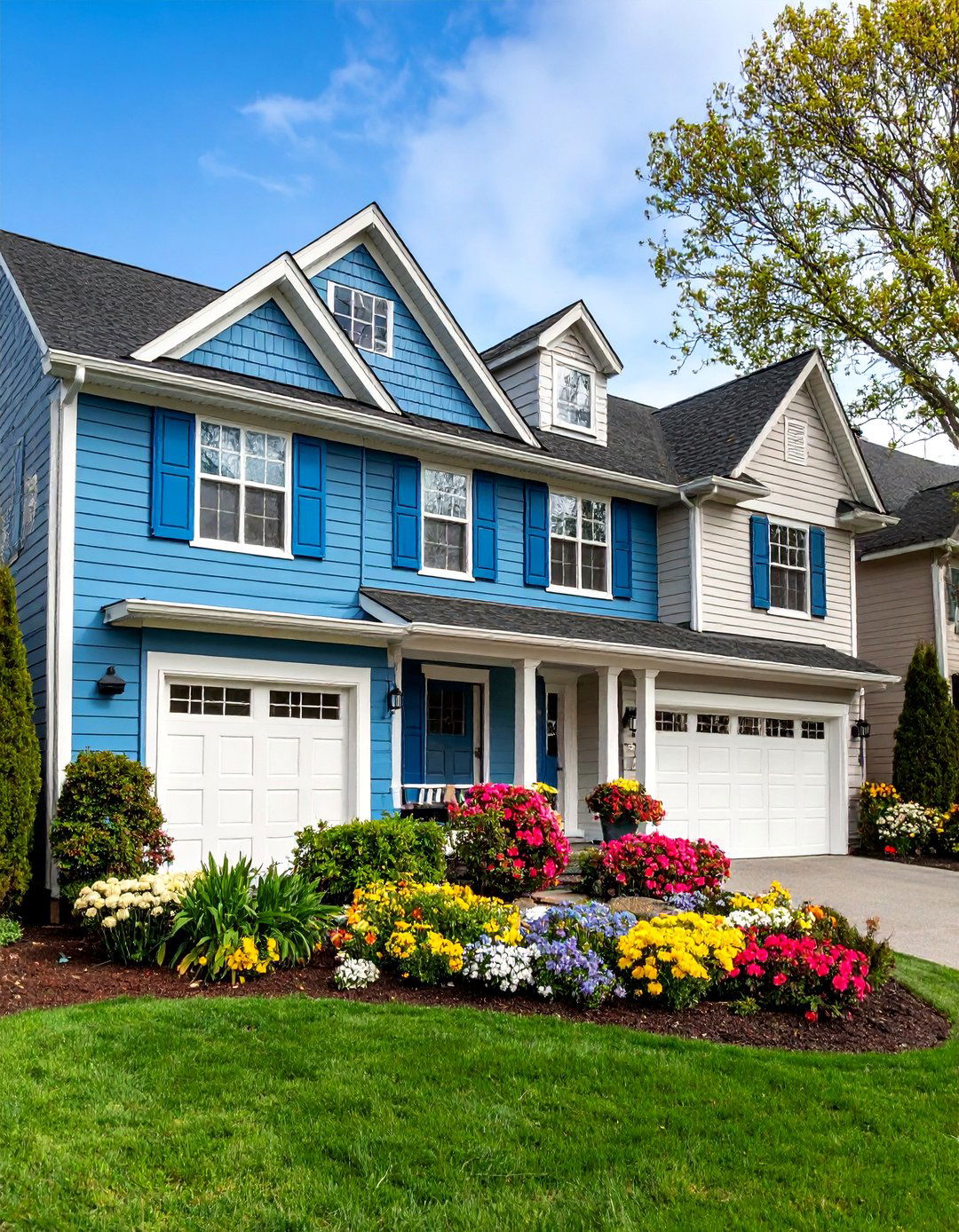
Develop a cohesive color scheme using three complementary colors for siding, trim, and accent elements like shutters, doors, and garage doors. Consider your home's architectural style, surrounding landscape, and neighborhood aesthetic when selecting colors. Warm neutrals like soft grays, creamy whites, and sage greens provide timeless appeal while bolder choices can create distinctive character. Test paint samples in different lighting conditions throughout the day before making final decisions. Coordinate fixed elements like roof color, stone, or brick with your chosen palette. Include your mailbox, light fixtures, and outdoor furniture in the color planning process for a polished, intentional appearance that enhances your home's architectural features.
4. Welcoming Front Porch Seating Area

Create an inviting outdoor living space with comfortable seating that encourages relaxation and socializing. Choose weather-resistant furniture in colors that complement your home's exterior palette, such as classic wicker rockers, modern metal chairs, or traditional wooden benches. Add personality with colorful outdoor cushions, throw pillows, and blankets that can be easily changed seasonally. Include a small side table for drinks and books, plus consider overhead lighting or string lights for evening ambiance. Position furniture to create conversation areas while maintaining clear pathways. Add decorative elements like lanterns, potted plants, or seasonal wreaths to enhance the welcoming atmosphere and showcase your personal style.
5. Professional Landscape Lighting Scheme

Install a comprehensive outdoor lighting system that highlights your home's best architectural features while ensuring safety and security. Combine pathway lights along walkways, uplights on trees and architectural elements, and wall-mounted fixtures near entrances for layered illumination. Use warm white LED bulbs for energy efficiency and longevity. Position lights to avoid glare while creating dramatic shadows and depth. Include timer controls or smart technology for convenience and security. Highlight landscape features like specimen trees, water features, or garden focal points. Consider seasonal adjustments and maintenance needs when planning placement. Professional-quality lighting transforms your property after dark, extending curb appeal beyond daylight hours and creating a sophisticated, welcoming atmosphere.
6. Symmetrical Window Box Gardens

Install matching window boxes beneath front-facing windows to add instant charm and seasonal color opportunities. Choose boxes that complement your home's architectural style and color scheme, whether traditional wood, modern metal, or classic fiberglass. Fill with a combination of trailing plants, upright flowers, and textural foliage for visual interest. Use a consistent planting scheme across all boxes for cohesive appeal. Include evergreen elements for winter structure and swap out seasonal flowers throughout the year. Ensure proper drainage and consider irrigation needs for convenient maintenance. Position boxes at appropriate heights for easy care and optimal visual impact. This classic enhancement adds European cottage charm to any home style.
7. Natural Stone Pathway Design
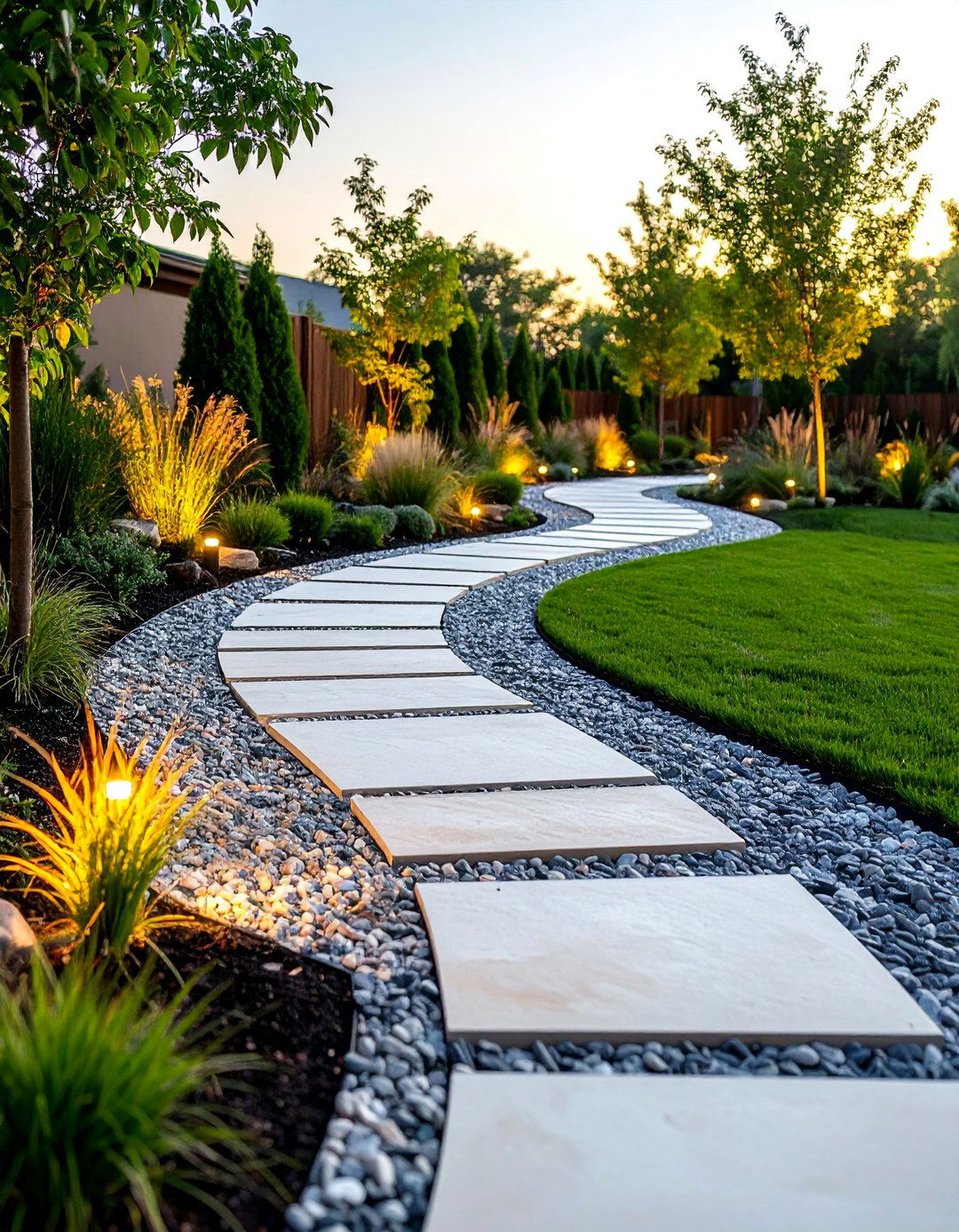
Replace plain concrete walkways with natural stone paths that add texture, elegance, and lasting appeal to your landscape. Choose materials that complement your home's exterior, such as flagstone, slate, or decorative pavers in colors that harmonize with your overall design scheme. Create gentle curves rather than straight lines for more natural, flowing movement through your landscape. Edge pathways with low-growing plants, decorative gravel, or integrated lighting for definition and safety. Consider permeable materials for environmental benefits and proper drainage. Include landing areas near entrances and steps for comfortable transitions. Natural stone pathways increase property value while creating an upscale appearance that weathers beautifully over time, requiring minimal maintenance.
8. Seasonal Container Garden Display
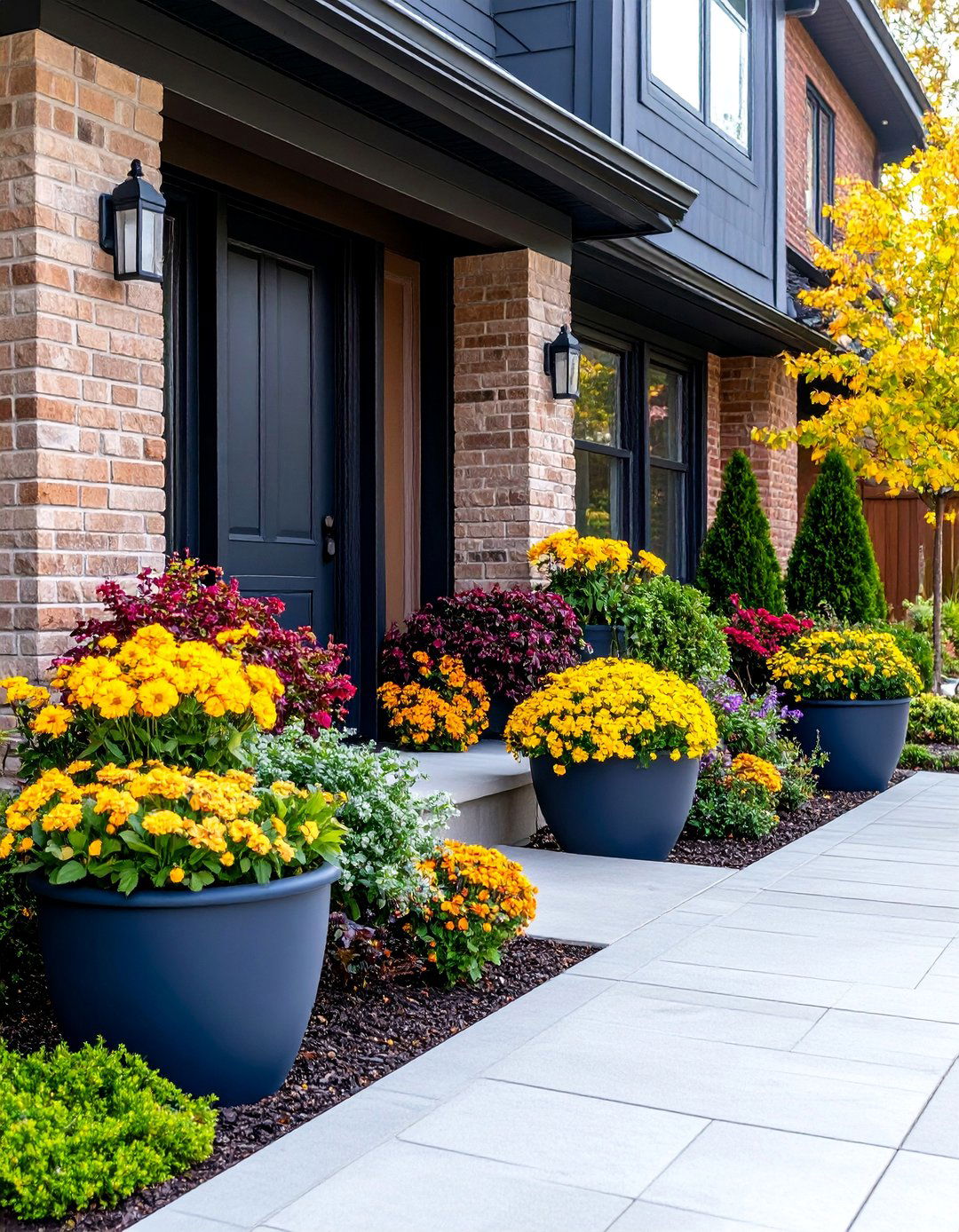
Create dynamic curb appeal with large-scale container plantings that change with the seasons, providing year-round color and interest. Choose substantial planters in materials and colors that complement your home's style, positioning them strategically near entryways, on porches, or flanking driveways. Design seasonal displays using a mix of thriller, filler, and spiller plants for professional-looking arrangements. Spring containers might feature tulips and pansies, summer arrangements could showcase geraniums and trailing petunias, while fall displays can include mums and ornamental kale. Winter arrangements with evergreen boughs and berry branches maintain appeal during dormant months. This flexible approach allows frequent refreshing without permanent landscape changes, keeping your curb appeal vibrant and current.
9. Upgraded Garage Door Treatment
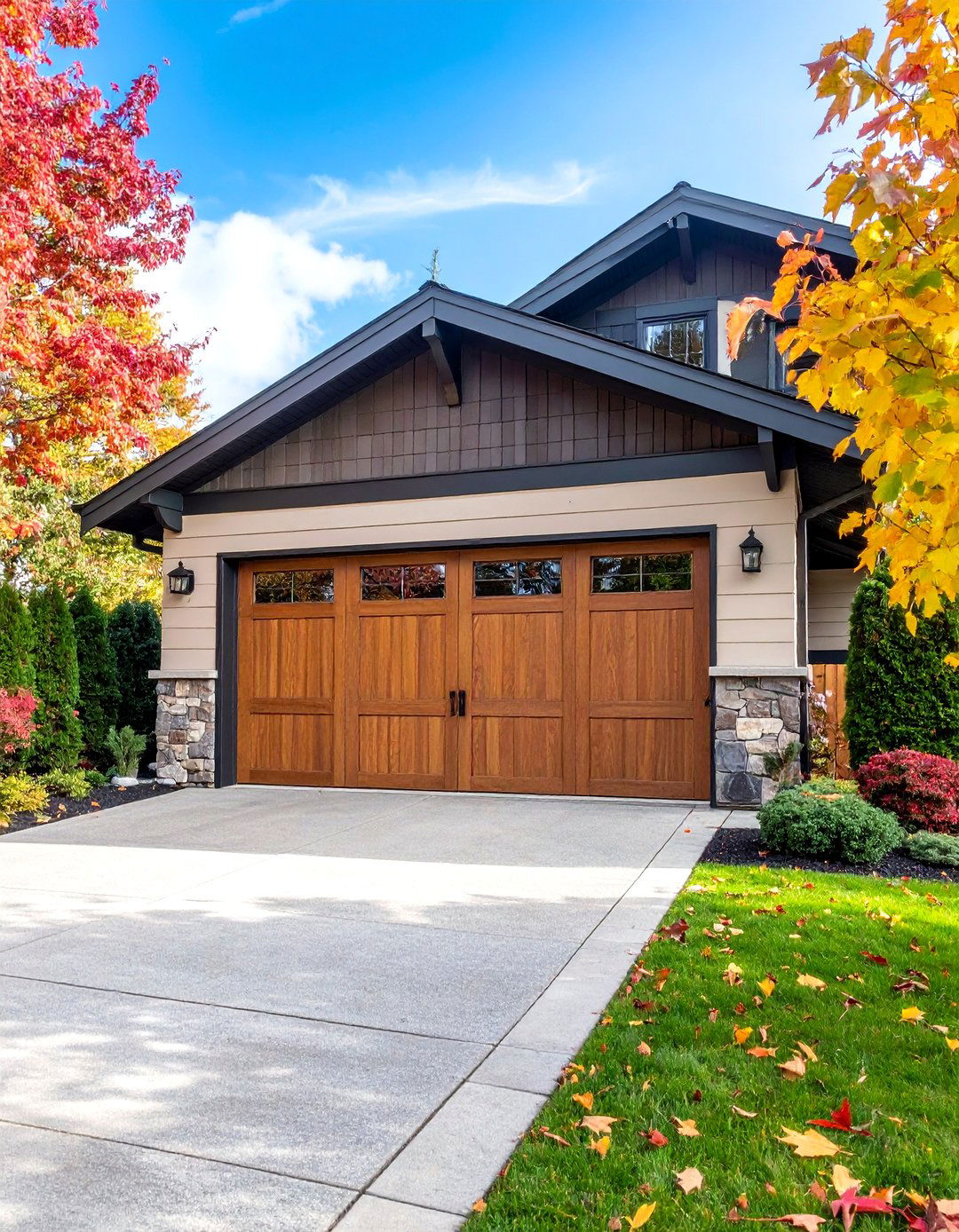
Transform your garage door from utilitarian necessity to attractive architectural feature with strategic updates that complement your home's overall design. Consider painting the door to match or accent your home's color scheme, or install decorative hardware like handles, hinges, and clavos for carriage house appeal. Add window inserts if your door style allows, or consider a complete replacement with a design that better matches your home's architecture. Frame the garage with complementary landscaping, including foundation plantings, decorative lighting, or climbing vines on trellises. Address the driveway approach with attractive borders, strategic plantings, or decorative elements that guide the eye toward your home rather than emphasizing the garage door's utilitarian function.
10. Picket Fence Perimeter Charm
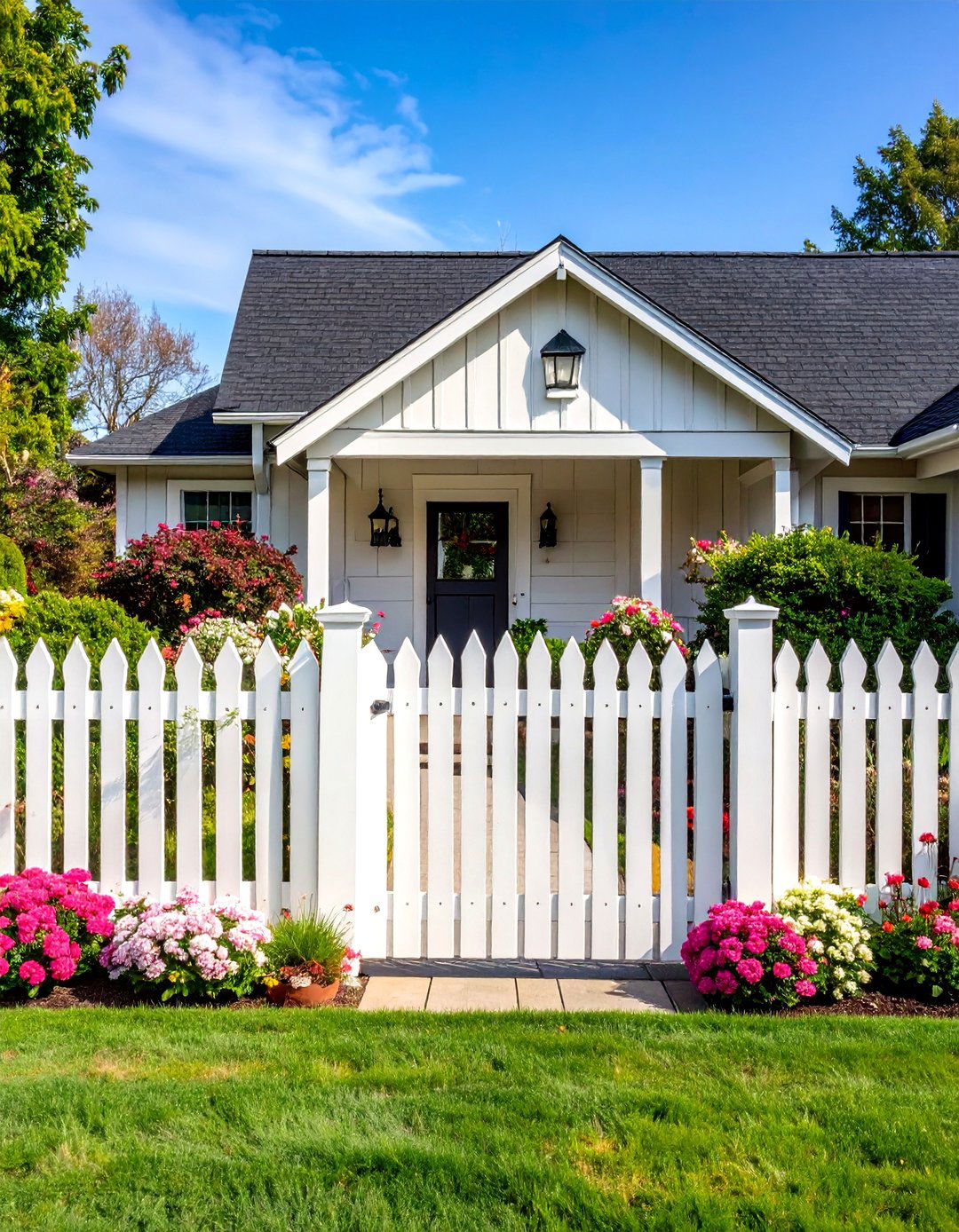
Install decorative fencing sections to define property boundaries while adding cottage charm and visual interest to your landscape. White picket fencing offers classic appeal that works with various architectural styles, though you can customize colors to match your home's palette. Use fencing strategically to frame garden areas, define the front yard boundary, or create privacy screens without overwhelming the landscape. Plant complementary flowers and shrubs along fence lines to soften the structure and integrate it naturally into your overall design. Consider fence height regulations and neighborhood covenants before installation. Add decorative gate hardware and ensure proper maintenance schedules to keep fencing looking fresh and appealing year-round.
11. Statement Mailbox and Address Display

Replace standard postal fixtures with distinctive mailbox and house number displays that reflect your home's character and improve street visibility. Choose materials and styles that coordinate with your architectural details, such as craftsman-style wood and metal combinations, sleek modern designs, or traditional decorative options. Ensure numbers are easily readable from the street using appropriate sizing, contrast, and lighting. Consider integrated planting areas around mailbox posts or decorative stone or brick surrounds for enhanced visual appeal. Include reflective or illuminated elements for nighttime visibility and safety. Position displays to comply with postal service requirements while maximizing aesthetic impact. Quality mailbox installations demonstrate attention to detail and contribute significantly to overall curb appeal impressions.
12. Ornamental Tree Focal Points

Plant specimen trees strategically positioned to create focal points, frame views, and add vertical interest to your landscape composition. Choose trees appropriate for your climate, soil conditions, and available space, considering mature size and seasonal characteristics. Flowering varieties like dogwood, redbud, or ornamental cherry provide spring beauty, while trees with interesting bark, fall color, or winter structure offer year-round appeal. Position trees to complement rather than compete with your home's architecture, avoiding placement that blocks windows or overwhelms building proportions. Underplant with appropriate ground covers or perennials that complement the tree's characteristics. Proper tree selection and placement creates lasting landscape structure while providing environmental benefits and significantly increasing property values.
13. Porch Column Enhancement Project
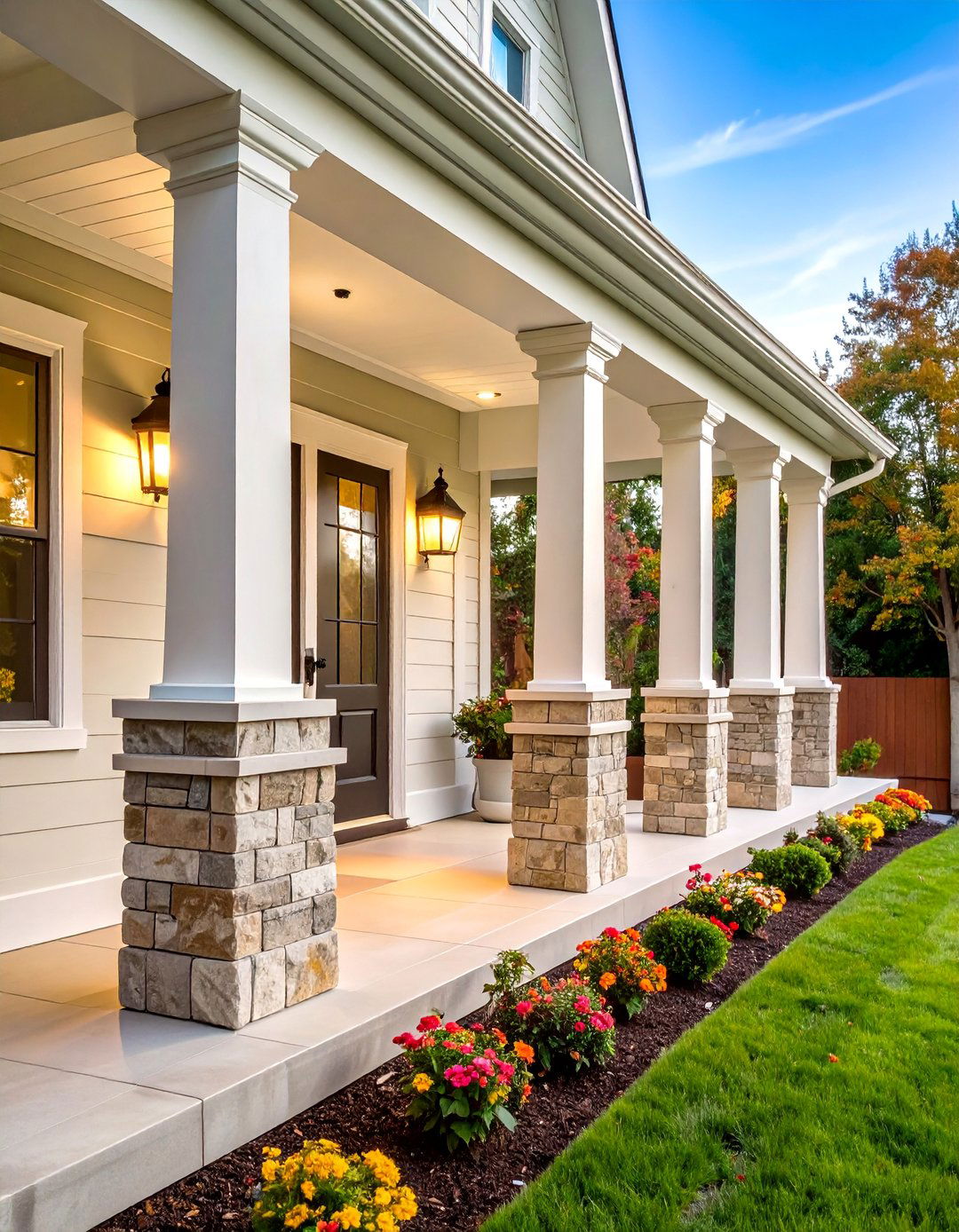
Upgrade plain porch columns with decorative elements that add architectural interest and complement your home's style. Wrap existing columns with attractive materials like stone veneer, decorative molding, or board-and-batten treatments for increased visual weight and character. Add column caps, bases, or integrated lighting for sophisticated detailing. Consider proportions carefully to ensure enhancements complement rather than overwhelm your porch's scale. Paint or stain treatments should coordinate with your overall color scheme while highlighting architectural details. Include complementary elements like decorative brackets, railings, or ceiling treatments for cohesive design. Column enhancements provide significant visual impact for relatively modest investment, transforming ordinary porches into welcoming architectural features that increase curb appeal.
14. Water Feature Integration Design
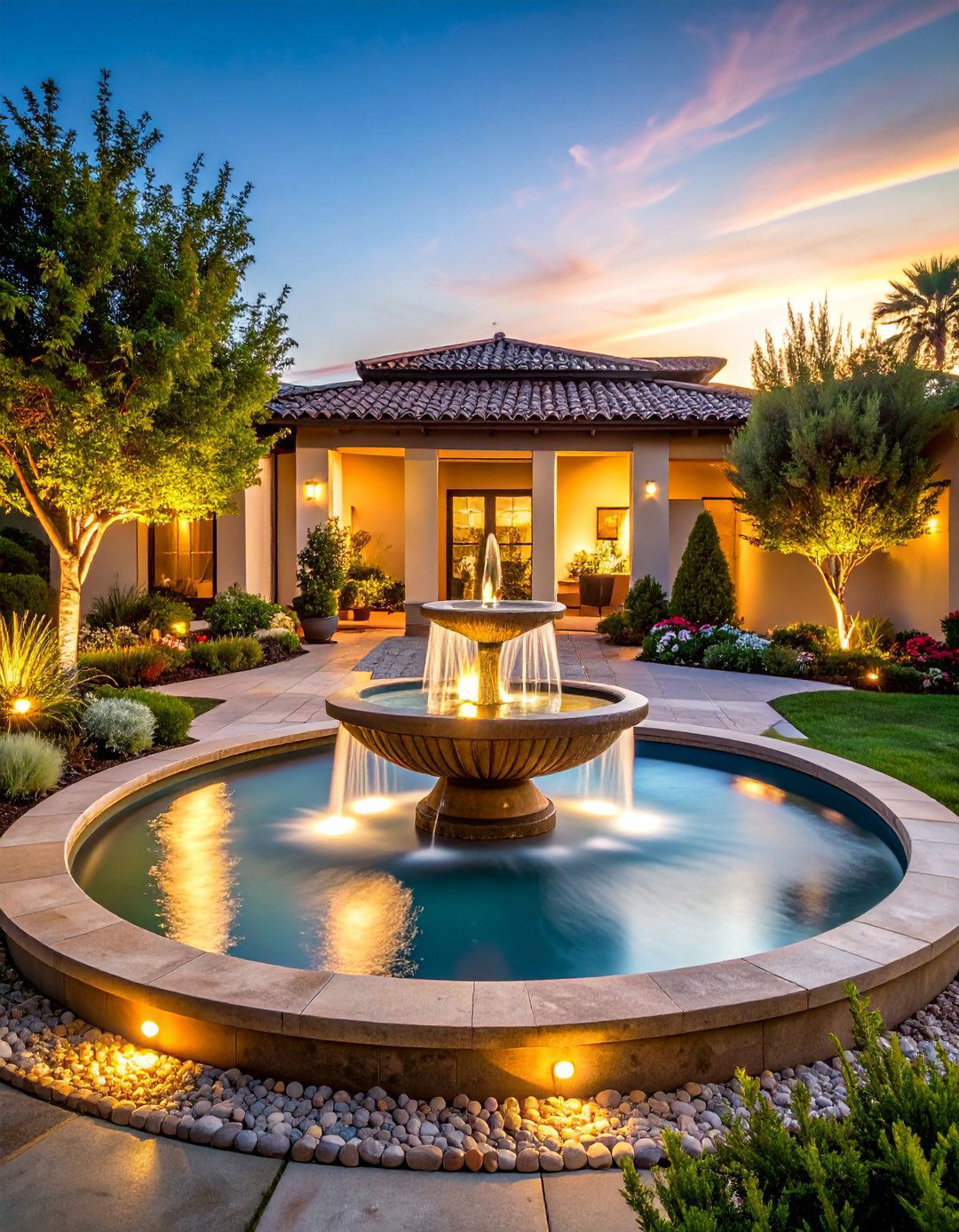
Incorporate water elements like fountains, small ponds, or decorative basins to add movement, sound, and sophisticated focal points to your front landscape. Choose features scaled appropriately for your property size and maintenance capabilities, ensuring compatibility with your architectural style and overall design theme. Position water features where they can be enjoyed from both interior spaces and street views, while considering utility access for pumps and lighting. Surround with complementary plantings that benefit from increased humidity and create naturalistic settings. Include appropriate lighting to extend enjoyment into evening hours. Maintain water quality through proper circulation, filtration, and seasonal care. Well-designed water features create distinctive curb appeal while providing relaxing ambiance and environmental benefits for local wildlife.
15. Outdoor Lighting Post Installation

Install decorative post lights along driveways, pathways, or property boundaries to create elegant illumination while defining outdoor spaces. Choose fixture styles that complement your home's architecture, whether traditional lantern designs, contemporary geometric forms, or rustic craftsman styles. Position posts at appropriate intervals for adequate lighting without creating runway effects, typically 10-12 feet apart along pathways. Include energy-efficient LED bulbs for longevity and reduced maintenance costs. Consider automated controls like timers or photocells for convenience and security benefits. Coordinate post materials and colors with other outdoor fixtures for cohesive appearance. Underground wiring provides clean installation while ensuring reliable operation. Quality post lighting adds sophisticated ambiance while improving safety and security for your property.
16. Climbing Plant Trellis Systems

Install attractive trellis structures to support climbing plants that add vertical interest, seasonal color, and architectural enhancement to blank walls or fence areas. Choose trellis materials and designs that complement your home's style, from classic wooden lattice to modern metal frameworks or rustic branch constructions. Select appropriate climbing plants for your climate and sun conditions, such as clematis for flowers, Virginia creeper for fall color, or evergreen varieties for year-round coverage. Provide adequate soil preparation and irrigation for healthy plant establishment. Consider mature plant size and support requirements when designing trellis systems. Maintain proper plant training and pruning for attractive growth patterns. Climbing plant installations create living architecture that improves with age.
17. Driveway Border Landscaping Design
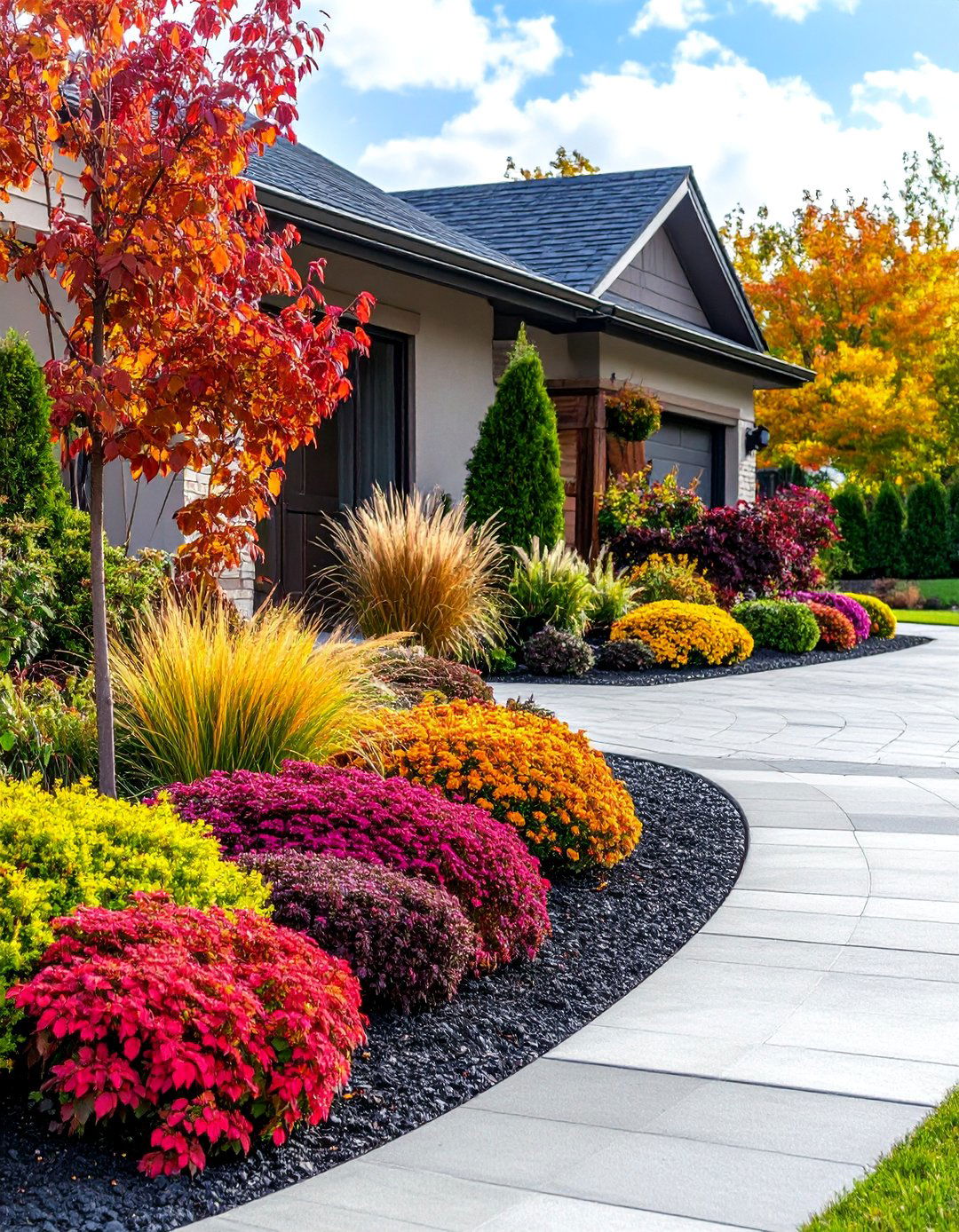
Transform utilitarian driveways into attractive landscape features through strategic border plantings and decorative treatments. Create planting beds along driveway edges using low-maintenance perennials, ornamental grasses, or evergreen shrubs that won't interfere with vehicle access or snow removal. Add seasonal color through annual plantings or container displays that can be easily maintained. Consider decorative edging materials like natural stone, brick, or metal strips for clean definition between planted areas and paving. Include appropriate drainage solutions to prevent water damage while supporting healthy plant growth. Coordinate plant selections with your overall landscape theme and maintenance capabilities. Well-designed driveway borders significantly improve curb appeal by softening hard surfaces and integrating vehicular areas into the overall landscape composition.
18. Front Yard Seating Nook Creation
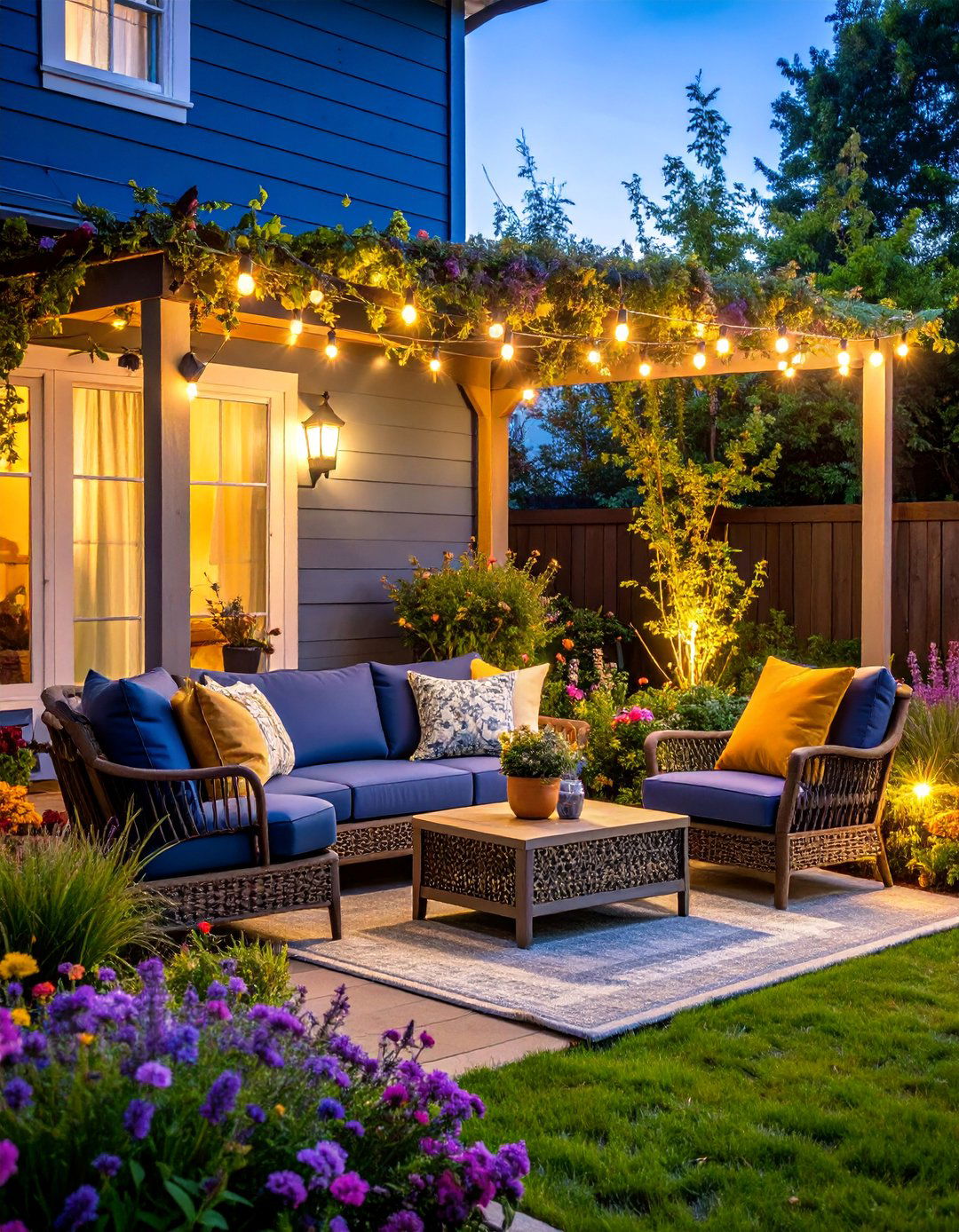
Design intimate seating areas within front yard spaces that invite relaxation while adding human-scale interest to your landscape. Choose locations that provide some privacy from street views while maintaining connection to your home's entrance. Create defined spaces using low hedging, decorative screens, or strategic plant placement. Include comfortable, weather-resistant seating like benches, small chairs, or built-in options that complement your architectural style. Add tables or surfaces for convenience, plus consider shade elements like umbrellas or pergolas for comfort. Include appropriate lighting for evening use and seasonal decorative elements that reflect your personal style. Front yard seating demonstrates outdoor living integration while creating distinctive curb appeal that suggests a lifestyle of leisure and enjoyment.
19. Decorative Shutters and Trim Update

Install or refresh decorative shutters and trim elements that enhance your home's architectural character while adding color and visual interest. Choose shutter styles appropriate for your home's period and design, ensuring proper proportional sizing for window openings. Consider functional versus decorative options based on your climate and maintenance preferences. Coordinate shutter colors with your overall exterior palette, using them as accent opportunities or to create sophisticated monochromatic schemes. Include quality hardware that reflects attention to detail and craftsmanship. Update window trim simultaneously to create cohesive architectural enhancement. Consider matching treatments for garage doors, front doors, or other exterior elements. Properly executed shutter and trim projects provide significant visual impact while demonstrating pride in homeownership and attention to architectural details.
20. Perennial Flower Border Installation

Establish permanent flower borders using hardy perennial plants that provide years of seasonal color with minimal annual replanting. Design borders with succession blooming to ensure continuous flowers from spring through fall, incorporating plants with varying heights, textures, and bloom times. Choose varieties appropriate for your climate zone and growing conditions, focusing on reliable performers that require minimal maintenance. Include structural plants like ornamental grasses or small shrubs for winter interest. Plan color schemes that complement your home's exterior while providing visual excitement throughout growing seasons. Prepare soil properly for long-term plant health and establish appropriate watering systems. Mulch beds annually for weed suppression and moisture retention. Well-designed perennial borders provide lasting curb appeal value with increasing beauty over time.
21. Exterior Lighting Fixture Upgrade

Replace outdated exterior light fixtures with stylish options that improve both function and aesthetic appeal while complementing your home's architectural style. Choose fixtures scaled appropriately for their locations, ensuring adequate illumination for safety while avoiding overwhelming proportions. Coordinate finishes and styles across all exterior lighting for cohesive appearance, considering options like traditional lanterns, contemporary minimalist designs, or rustic craftsman styles. Include energy-efficient LED technology for reduced operating costs and maintenance needs. Consider smart lighting controls for convenience and security benefits. Position fixtures to highlight architectural features while avoiding light pollution or glare issues. Professional installation ensures proper electrical connections and weather sealing. Quality lighting fixtures significantly enhance curb appeal while providing practical benefits for daily use and home security.
22. Raised Planter Bed Construction
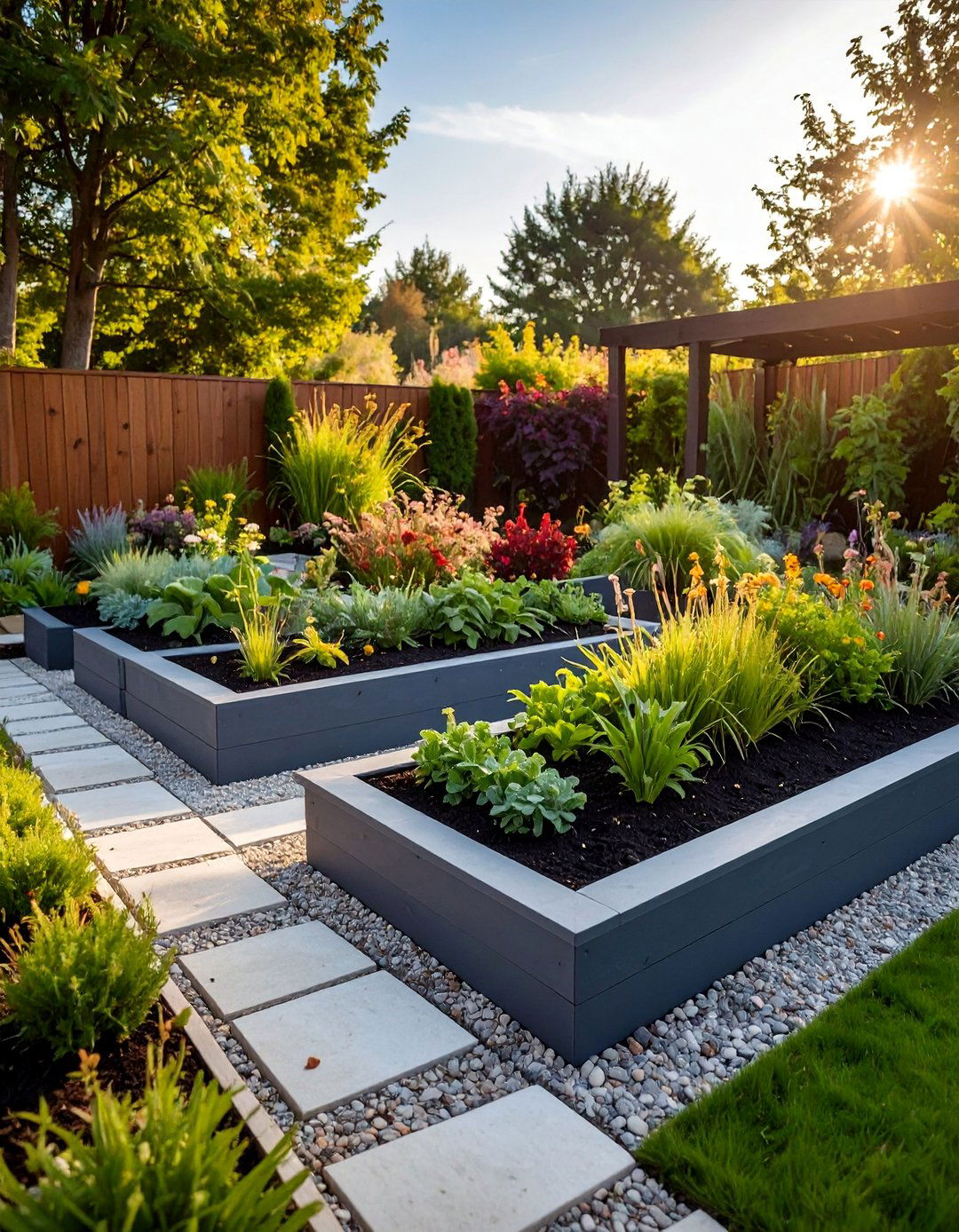
Build attractive raised planters that add dimension, improve drainage, and create opportunities for distinctive plantings in challenging locations. Choose construction materials that complement your home's architecture, such as natural stone, decorative blocks, or weather-resistant wood. Design planters with appropriate depths for intended plantings while considering irrigation and drainage needs. Position raised beds strategically to frame entrances, define spaces, or solve slope or soil problems. Fill with quality growing medium and select plants appropriate for the exposure and container growing conditions. Consider seasonal planting changes to maintain year-round appeal. Include integrated lighting or decorative elements for enhanced evening appeal. Raised planters provide immediate visual impact while solving practical landscaping challenges and creating opportunities for creative plant combinations.
23. Garden Pathway Integration Project
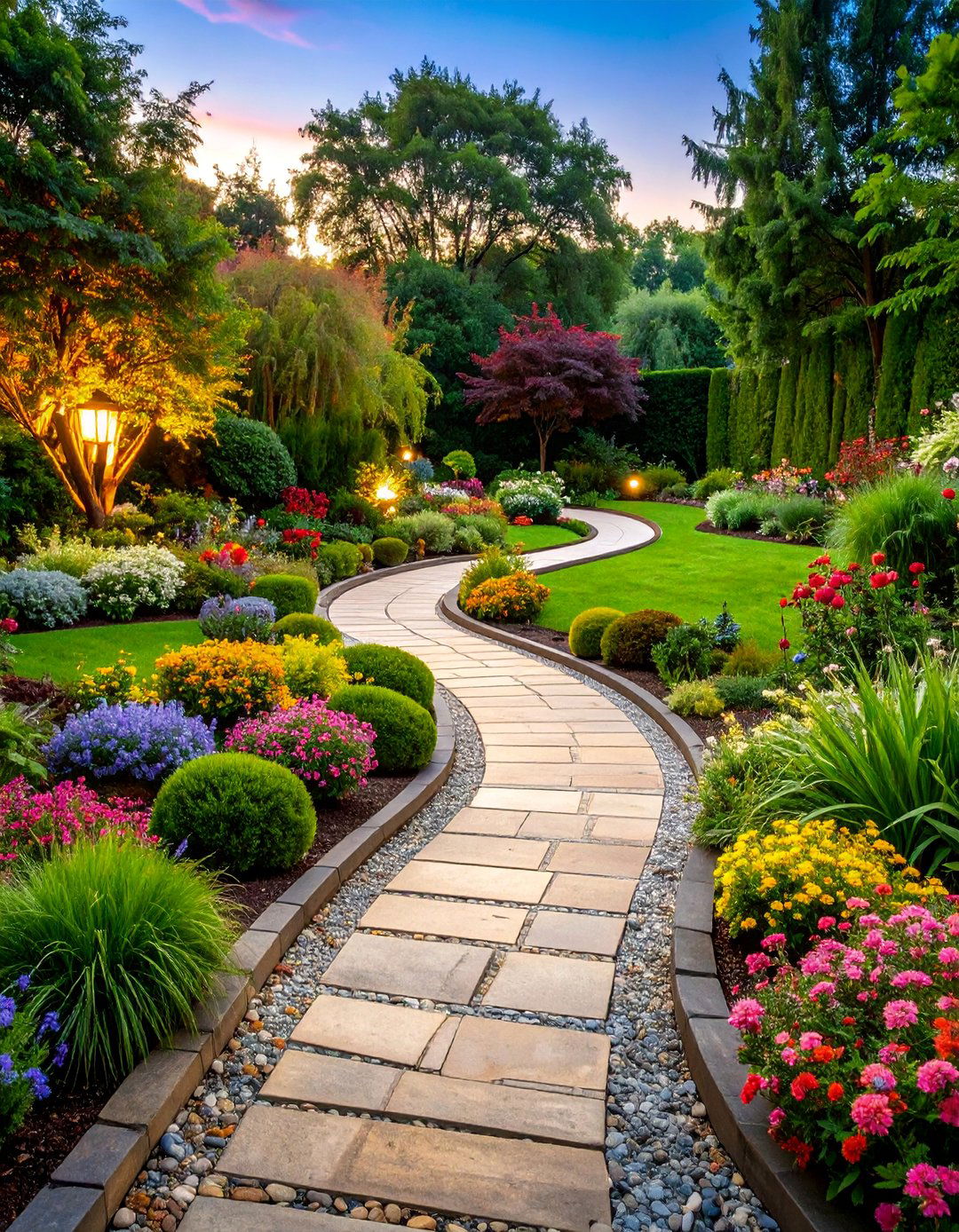
Create meandering garden paths that connect different landscape areas while providing opportunities to showcase plantings and garden features. Design pathways with gentle curves and varying widths to create interest and natural flow through your landscape. Choose paving materials that complement your home's style and existing hardscape elements, considering maintenance requirements and budget constraints. Line pathways with appropriate plantings that provide fragrance, seasonal interest, or dramatic foliage effects. Include rest areas or focal points along longer paths to create destination experiences. Integrate lighting for safe evening navigation and extended enjoyment. Consider wheelchair accessibility and universal design principles where appropriate. Well-designed garden paths enhance property navigation while creating opportunities for intimate landscape experiences that add significant value to outdoor living spaces.
24. Architectural Detail Enhancement Scheme

Upgrade existing architectural features or add new decorative elements that emphasize your home's character and improve visual appeal. Focus on details like window trim, corner boards, brackets, or decorative moldings that can be enhanced with paint, replacement, or additional elements. Consider period-appropriate treatments that respect your home's original design while updating its appearance. Include elements like corbels, dentil molding, or decorative gables that add sophistication without overwhelming existing proportions. Coordinate enhancements with your overall color scheme and material palette. Address maintenance needs and weather protection requirements for long-term durability. Professional installation ensures proper integration with existing structure. Architectural detail improvements demonstrate quality and craftsmanship while significantly increasing perceived value and curb appeal sophistication.
25. Seasonal Decoration Display Strategy

Develop a year-round approach to seasonal decorating that maintains fresh, welcoming curb appeal through all seasons while reflecting your personal style. Create flexible systems using interchangeable elements like container plantings, door wreaths, or decorative accents that can be easily updated without major landscape changes. Plan spring displays featuring fresh flowers and greenery, summer arrangements emphasizing vibrant colors and lush growth, fall decorations incorporating harvest themes and warm colors, and winter presentations using evergreen elements and tasteful holiday touches. Establish storage and rotation systems for efficient seasonal transitions. Consider weather resistance and maintenance requirements for all decorative elements. Maintain sophisticated restraint to avoid overwhelming your home's architecture. Consistent seasonal attention demonstrates ongoing care and pride while keeping your property's appearance fresh and inviting throughout the year.
Conclusion:
Effective curb appeal combines multiple elements working harmoniously to create lasting first impressions that enhance both daily enjoyment and property values. Focus on improvements that complement your home's existing architecture while expressing personal style through thoughtful color choices, strategic landscaping, and quality fixtures. Prioritize projects based on budget, maintenance capabilities, and potential impact, remembering that consistent care and attention to detail often matter more than expensive renovations. Start with high-impact, low-cost improvements like fresh paint, updated lighting, or seasonal plantings, then build toward more comprehensive enhancements over time.



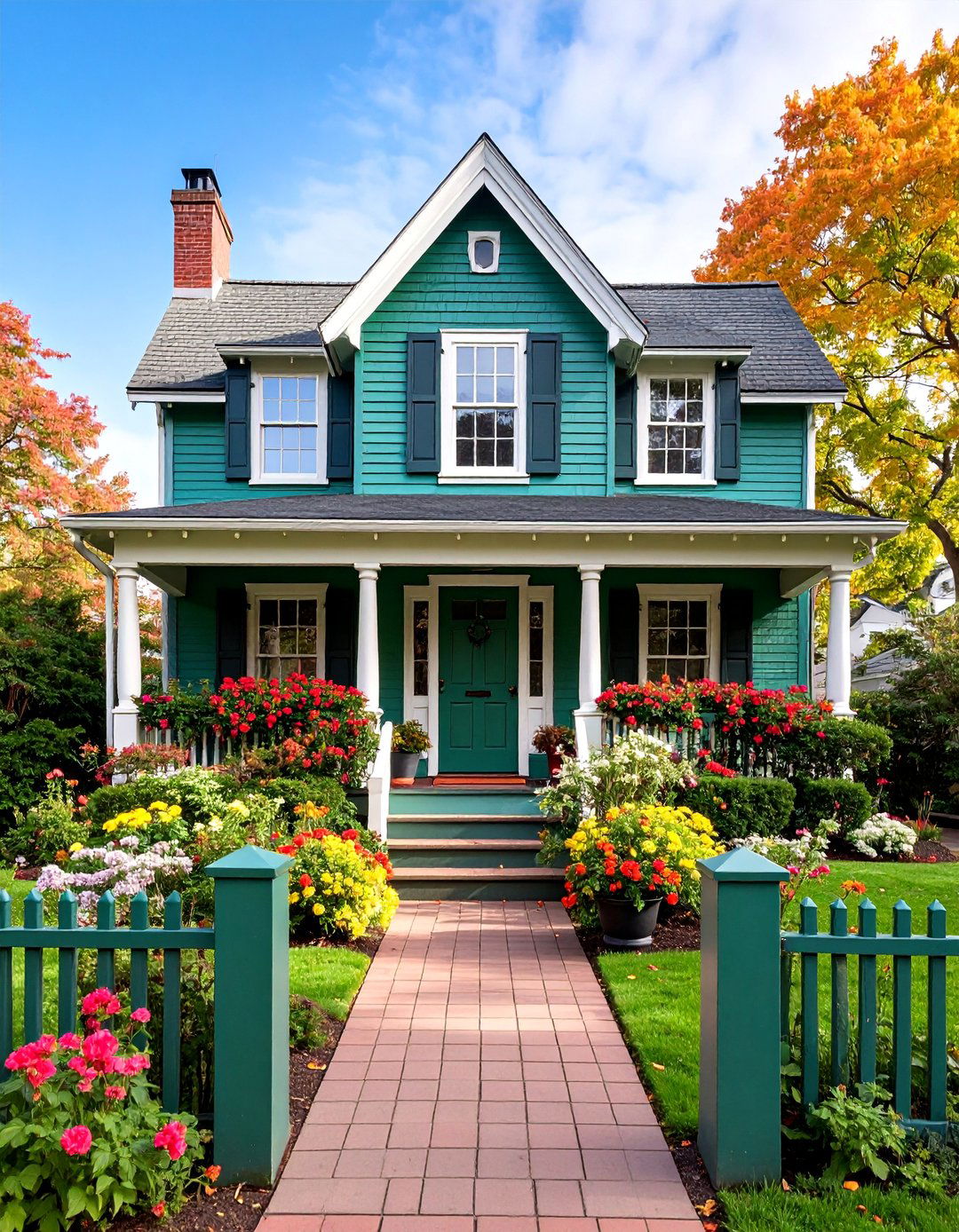
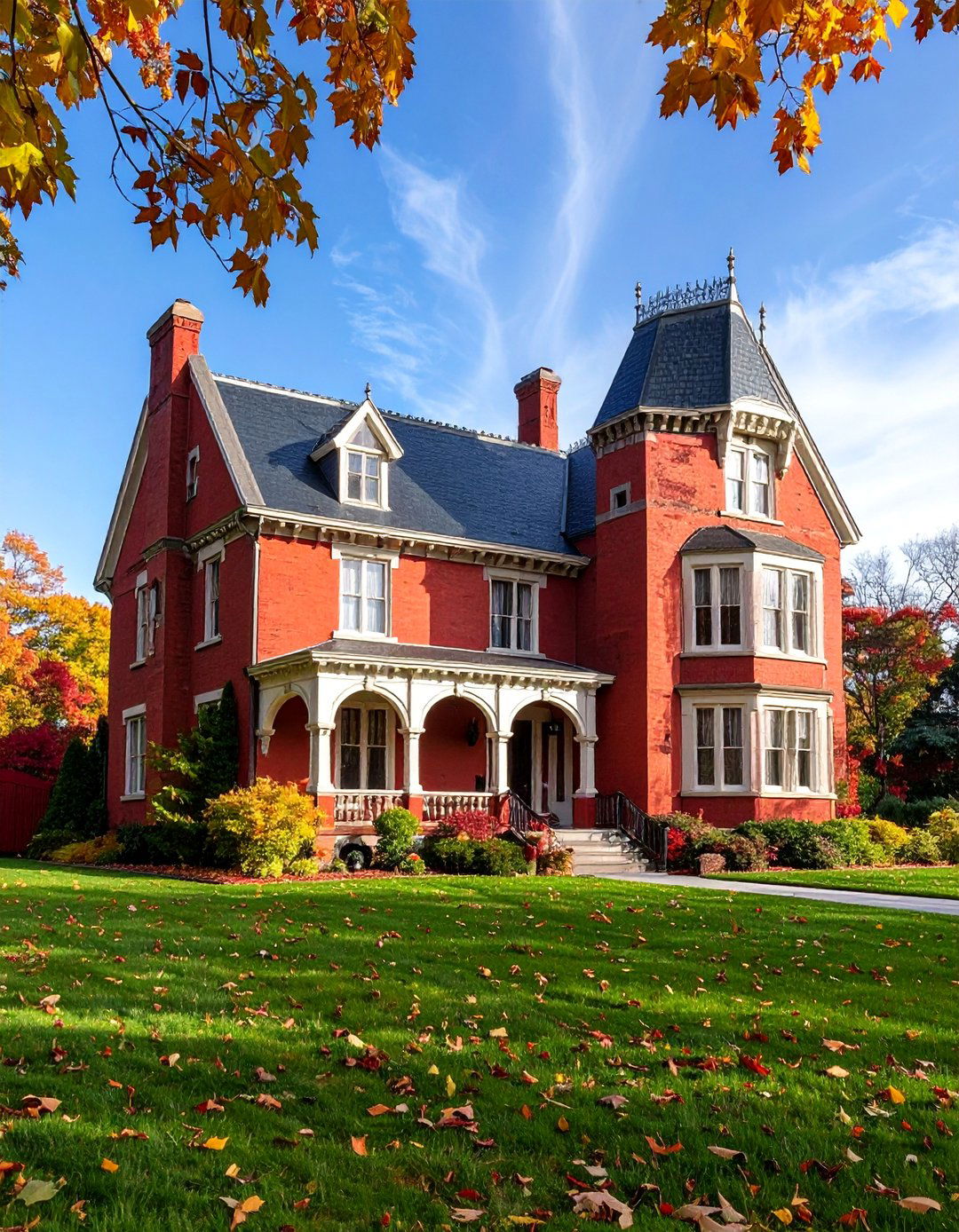

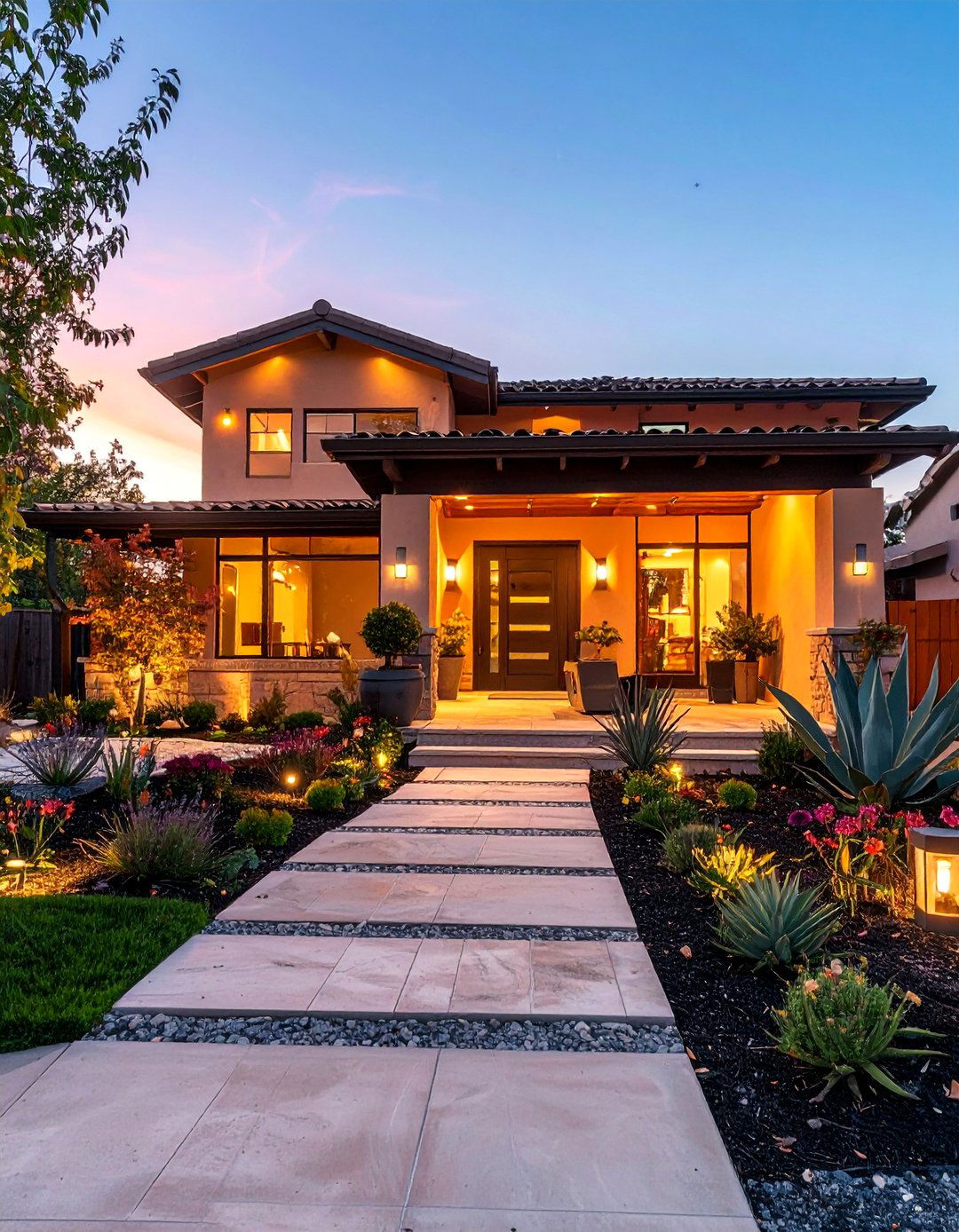
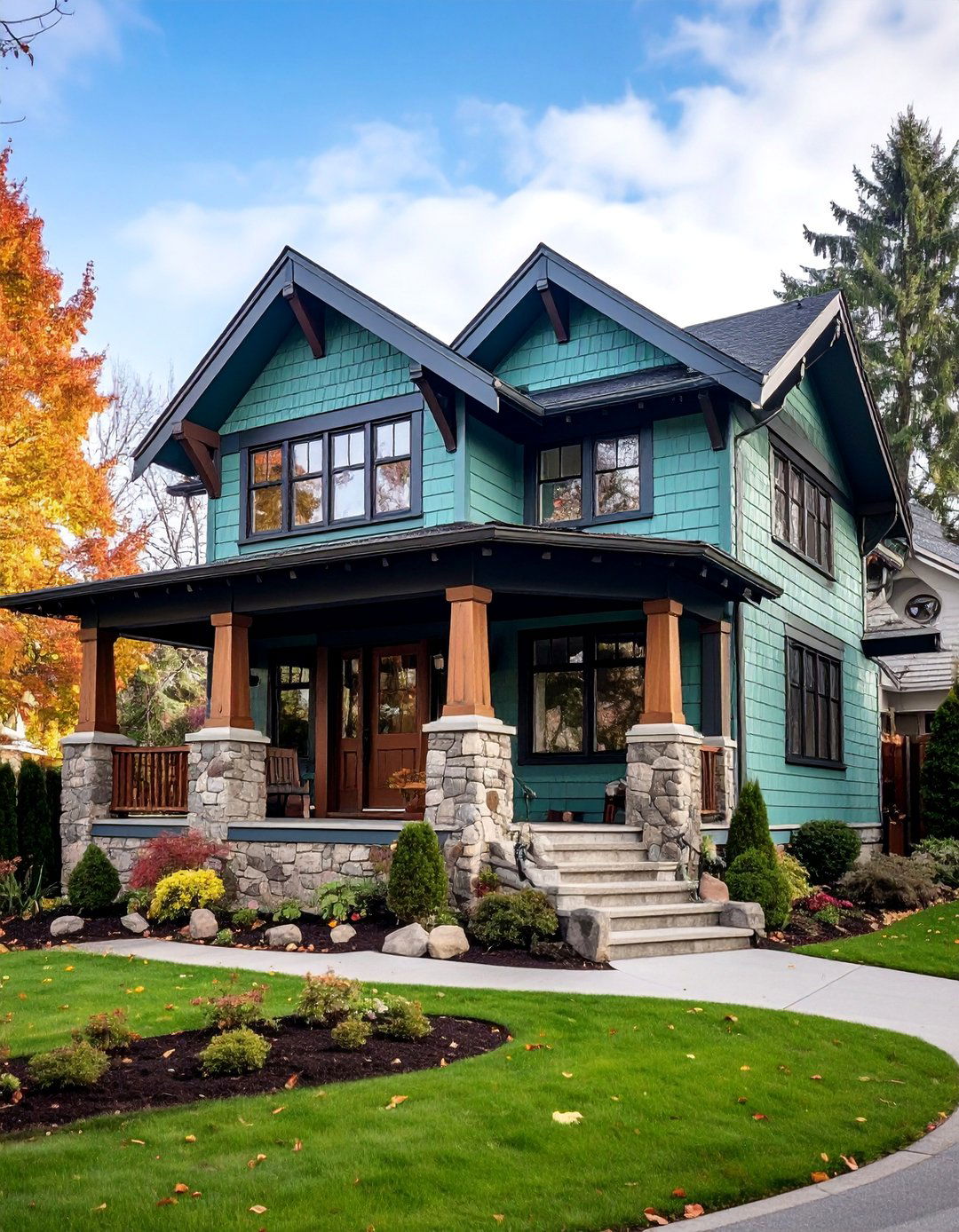
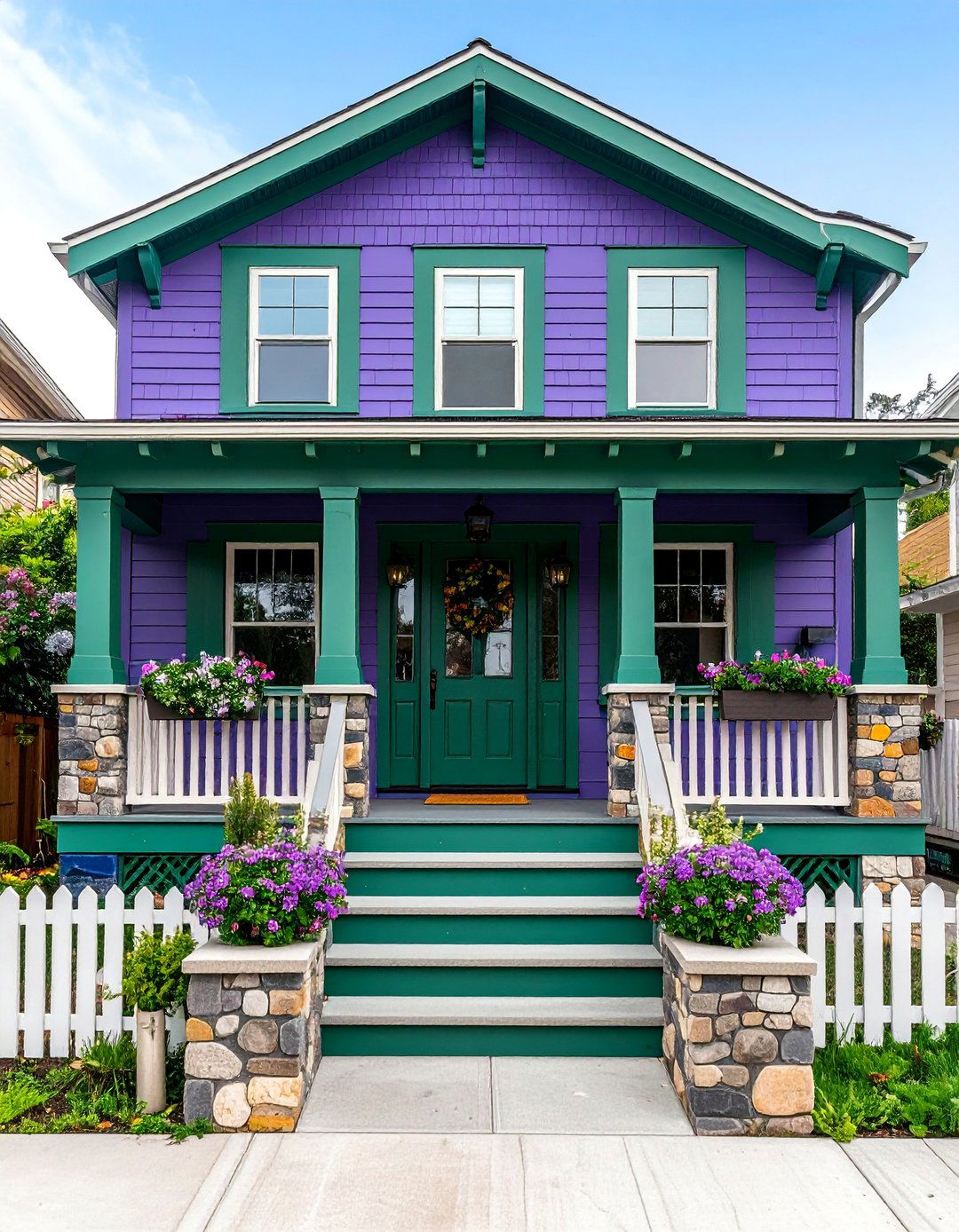


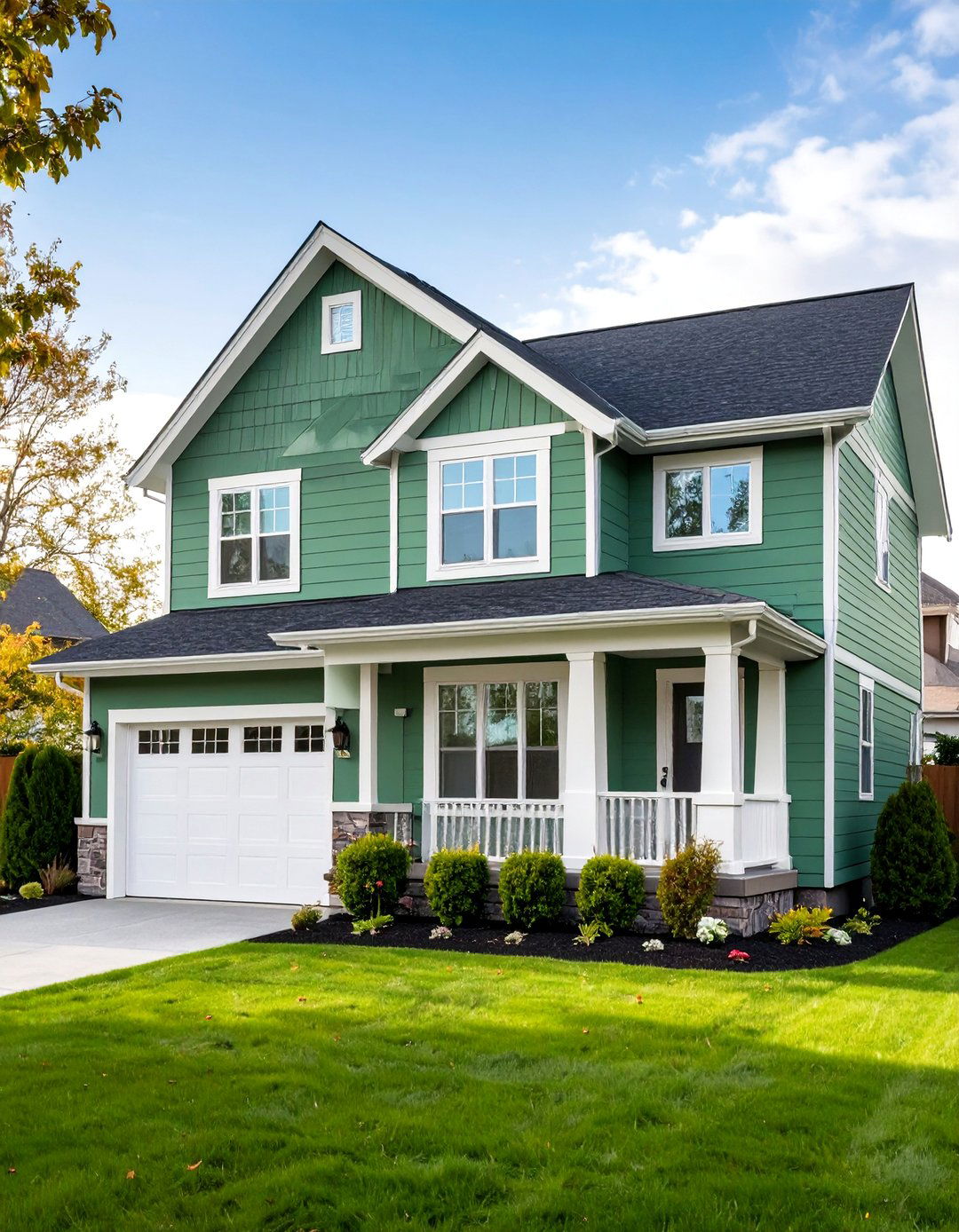
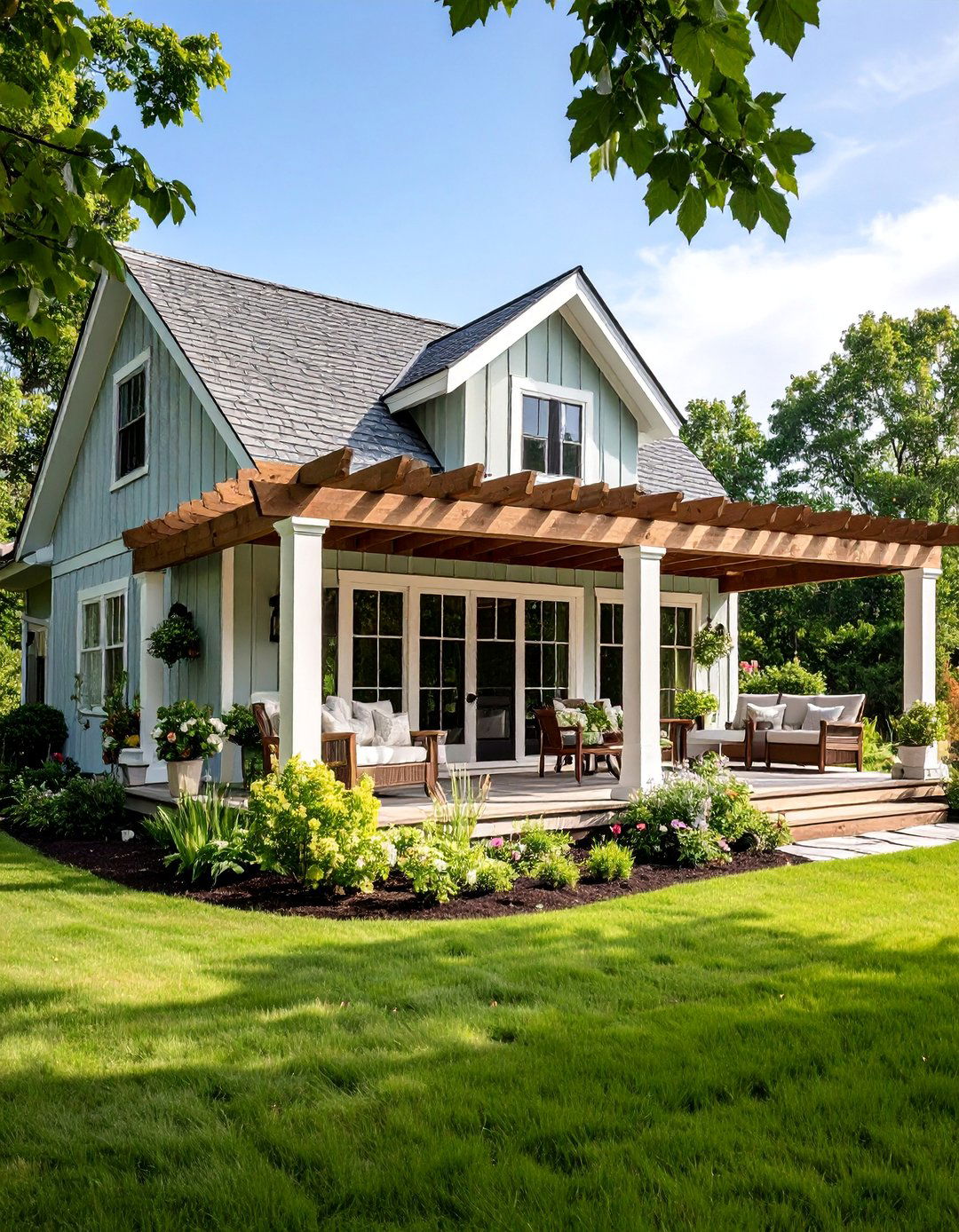

Leave a Reply